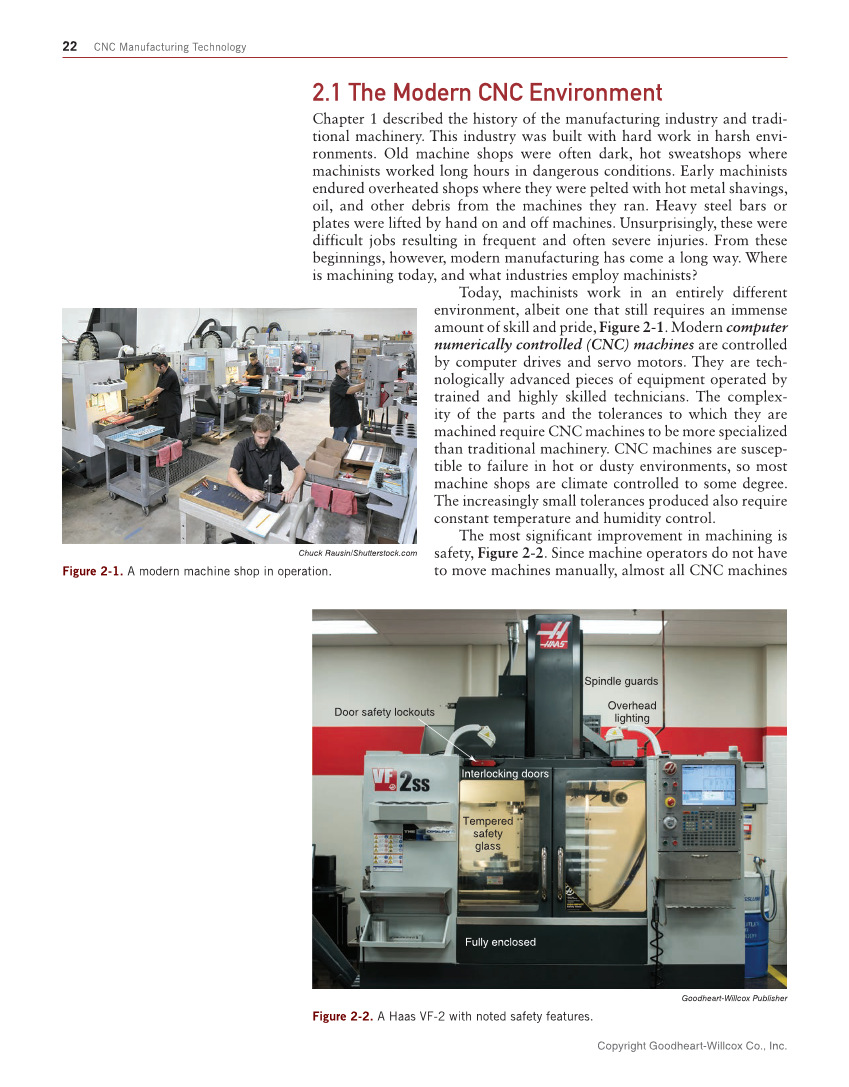Copyright Goodheart-Willcox Co., Inc. 22 CNC Manufacturing Technology 2.1 The Modern CNC Environment Chapter 1 described the history of the manufacturing industry and tradi- tional machinery. This industry was built with hard work in harsh envi- ronments. Old machine shops were often dark, hot sweatshops where machinists worked long hours in dangerous conditions. Early machinists endured overheated shops where they were pelted with hot metal shavings, oil, and other debris from the machines they ran. Heavy steel bars or plates were lifted by hand on and off machines. Unsurprisingly, these were difficult jobs resulting in frequent and often severe injuries. From these beginnings, however, modern manufacturing has come a long way. Where is machining today, and what industries employ machinists? Today, machinists work in an entirely different environment, albeit one that still requires an immense amount of skill and pride, Figure 2-1. Modern computer numerically controlled (CNC) machines are controlled by computer drives and servo motors. They are tech- nologically advanced pieces of equipment operated by trained and highly skilled technicians. The complex- ity of the parts and the tolerances to which they are machined require CNC machines to be more specialized than traditional machinery. CNC machines are suscep- tible to failure in hot or dusty environments, so most machine shops are climate controlled to some degree. The increasingly small tolerances produced also require constant temperature and humidity control. The most significant improvement in machining is safety, Figure 2-2. Since machine operators do not have to move machines manually, almost all CNC machines Chuck Rausin/Shutterstock.com Figure 2-1. A modern machine shop in operation. Door safety lockouts Tempered safety glass Spindle guards Overhead lighting Interlocking doors Fully enclosed Goodheart-Willcox Publisher Figure 2-2. A Haas VF-2 with noted safety features.
